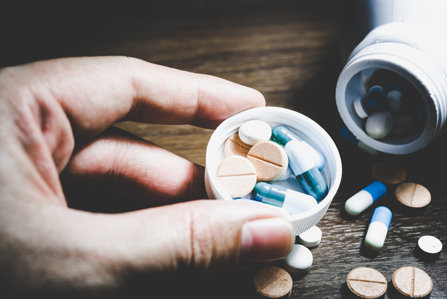Unused Medications… One of the Real Causes of the Opiate Epidemic

With heroin use completely out of control in this country, many of us have lost track of where it came from in the first place. It seems like our country has rolled over and accepted that the heroin problem exists and even worse, takes an almost apathetic point of view on the whole situation. We haven’t created many useful tools to combat it or put funding into what will actually solve the problem.
Instead of putting money into long-term, residential treatment, money is being funneled into “miracle cures” and harm reduction methods. We’re spinning our wheels here and I think we need to go back to basics on combating the opiate problem.
Let’s take a trip down memory lane. Back in 1996, Purdue Pharma put OxyContin on the market and it was an immediate sensation, so to speak. People were being placed on it for everything from terminal cancer to broken arms. While the drug was being pushed into communities across the nation, family medicine cabinets began swelling with pain pills and curious minds and thieving hands began to experiment with these drugs. Kids raided their families medicine drawers, bathroom cabinets and if they were anything like my family, had an entire kitchen cabinet filled to the brim with drugs. Kids tried the drugs and liked them and the alarming part is, doctors had no problem writing script after script. After a while, these kids were hooked. And I mean HOOKED.
When the doctor did cut them off and they ran out of pills, withdrawal symptoms kicked in, furthering their desperate need for them. So they hit the streets to find their fix. When they bought Oxy on the streets or from their friends, they paid $1 a milligram, meaning an 80mg OxyContin cost them $80. For one pill!
What does any person in need of a drug that’s too expensive do? Find a cheaper alternative. And that cheaper alternative was heroin. Heroin is double the strength and half the price and became a normal progression for the opiate addict. Here we have a once straight-A student from a good family with aspirations of college, now a full-blown heroin addict.
One of the causes of the opiate problem was that families were hanging onto unused pain pills, amongst countless other medications. Left open, unsecured, and ripe for the picking. Kids are curious and once they find out from their friends what some of those pills are, you might as well kiss those pills goodbye. If families had disposed of the unused medications properly and kept the ones they had secured, we may have dodged a major bullet. There are thousands of addicts who may have never turned into addicts, had they not gotten into mom and dad’s or grandma’s and grandpa’s medicine.
I think we’ve lost sight of how important this one little point is. And still, to this day, there are families with tons of medications they no longer use and which are stockpiled in their homes begging to be gotten into.
The first step in handling addiction, of course, is prevention. By keeping all these meds in the home, what are we really doing to prevent future generations of addicts from taking their first pill? The answer is “nothing.” Families need to completely dispose of their unused medications, especially narcotics. There is helpful information about how do to so on the DEA’s website.
If you want to curb the opiate problem, as a first step, do what you can to prevent new addictions from being formed. Please, if you have unused medications in your home, dispose of them appropriately and immediately. You never know who might get into them.
